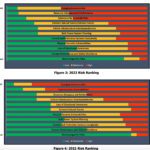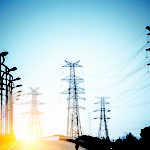Industry responses to a Level 2 alert on contingency planning issued by the North American Electric Reliability Corp. (NERC) early last month suggest the “vast majority” of registered participants in the North American bulk power system are well prepared for the COVID-19 crisis.
NERC, the interconnected bulk power system’s Electric Reliability Organization (ERO), has underscored the pandemic is an “unprecedented event for bulk power system operators.” On March 10, in an effort to bolster the system’s reliability and security as the pandemic began to intensify in the U.S., it gave all registered entities 10 days to provide responses to a set of questions that sought to gauge how they are preparing for COVID-19 in a public Level 2 alert on COVID-19 contingency planning.
Responses participants submitted—which are summarized in a confidential informational filing to the Federal Energy Regulatory Commission (FERC)—reflect that a “vast majority of registered entities indicated that they either have a written pandemic response plan or are in the process of developing one,” NERC revealed this week. The majority of registered entities have also reviewed pandemic staffing requirements.
Knowing Weaknesses Is a Strength
Industry also appears to be solidly attentive toward potential vulnerabilities, NERC noted. Especially heartening is that it has tightly coalesced to address key issues surrounding supply chain needs and for mutual aid requests. As well as responding to NERC’s Level 2 alert, for example, utilities responded to NERC’s Electricity Information Sharing and Analysis Center’s (E-ISAC’s) early February all-points bulletin and “have reviewed their supply chains to develop plans to deal with potential equipment shortfalls,” it said. More than half of registered entities, meanwhile, said they would support mutual aid requests. Utilities have also identified risks related to “the ability to complete major construction projects and maintenance turnarounds, which could lead to some constraints over the summer,” NERC said.
All of this, however “reinforces the need for continuous monitoring, planning and coordination,” it stressed. “The good news during this public health emergency is the fact that industry is prepared and has done its due diligence toward contingency planning in order to keep the lights on,” explained Jim Robb, NERC’s president and CEO. “Industry has come together to protect the health and well-being of their workforce while still being focused on providing customers with the electricity they rely on. Importantly, the majority responded that they will be able to support mutual aid, a key consideration as we move into the spring and summer storm season.”
NERC said that, for now, it will continue to conduct a weekly situational awareness call with the continent’s Reliability Coordinators, who have generally activated their back-up control centers, isolated key workers, and are maintaining a deep cleaning routine. The entity is now also working on a “more comprehensive assessment of potential reliability risks and considerations” due to the “unusual operating conditions” presented by the pandemic. That assessment, which will offer more insight into pandemic preparedness, spring 2020 conditions, and “lessons learned” from system operators around the world (such as from Italy), will likely be released in April.
Rigorous Preparedness: Lessons Learned from Grid-Ex
One reason that bulk power system entities are suitably equipped to respond to emergencies may be because it has for years made a concerted effort to coordinate efforts as they relate to a number of debilitating threats, suggested Matthew Duncan, senior manager of Resilience and Policy Coordination at E-ISAC in a media briefing on March 31.
Duncan, who presented lessons learned from Grid-Ex V, a grid security and emergency response exercise held over two days last November, noted that the event was the fifth in a series that began in 2011. More than 7,000 “players” from 526 organizations participated in Grid-Ex V, around 254 of which were electricity asset owner and operators. Compared to previous exercises, Grid-Ex V also had broadened participation from wider stakeholders, including from interdependent industries such as natural gas utilities, water utilities, and telecommunications companies, as well as from governmental organizations from Mexico, New Zealand, Australia, and the UK, Duncan said.
Last year’s exercise aimed to find vulnerabilities in the system-wide response to severe cyber and physical attacks, and it conducted two scenarios. One included a cyber attack targeting utility control systems accompanied with physical attacks that targeted key power generation and transmission facilities and natural gas transmission. The other explored degraded grid reliability from a central location. The overall goal was the same as with other exercises in the Grid-Ex series, and “that’s the strength of the capability of the industry to respond to and recover from severe cyber-physical security events, as well as other hazards and the objectives that support what we were able to achieve.”
Grid-Ex V generally found that electric utilities and their reliability coordinators (RCs) have a well-established process to coordinate operations through normal and emergency events, such as severe storms. However, emergencies with national security implications could add “layers” of complexity beyond the control of the power sector, and could disrupt or delay grid restoration activities.
Among its long list of detailed recommendations, NERC urged entities to review crisis management plans to evaluate how they would manage events with national security implications. It also recommended that natural gas providers and pipeline operators be included into restoration planning and drills. Another important lesson is for industry to build consensus with the U.S. Department of Energy on the design, issuance, and liability protections for grid security emergency orders issued under Section 215A of the Federal Power Act.
While Grid-Ex did not add a pandemic to its scenarios, system response to the COVID-19 crisis may have gleaned key lessons from the exercise, Duncan said. “I think you see that unity of message, unity of effort, but also unity of guidance come out of the electricity industry. And that is something that we learned very early on, not only for traditional storm response, but if you even go as far back as Grid-Ex II [in 2013], to looking at that public communications front and making sure you speak with one voice—providing guidance and one source of truth,” he said. “And that’s what’s playing out now with COVID-19.”
—Sonal Patel is a POWER senior associate editor (@sonalcpatel, @POWERmagazine).










